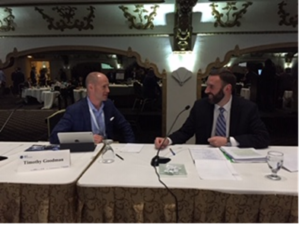Babst Calland is pleased to announce that five lawyers were selected as 2020 Best Lawyers “Lawyer of the Year” in the Pittsburgh, Pa. and Charleston, W. Va. (by BL Rankings). Only a single lawyer in each practice area and designated metropolitan area is honored as the “Lawyer of the Year,” making this accolade particularly significant.
Receiving this designation reflects the high level of respect a lawyer has earned among other leading lawyers in the same communities and the same practice areas for their abilities, professionalism, and integrity. Those named to the 2020 Best Lawyers “Lawyer of the Year” include:
Donald C. Bluedorn II, Environmental Law “Lawyer of the Year” in Pittsburgh, Pa. – In addition to the “Lawyer of the Year” award, Donald Bluedorn was also listed in the 2020 Edition of The Best Lawyers in America in Environmental Law, Litigation – Environmental, and Water Law.
Kevin J. Garber, Energy Law “Lawyer of the Year” in Pittsburgh, Pa. – In addition to the “Lawyer of the Year” award, Kevin Garber was also listed in the 2020 Edition of The Best Lawyers in America in Environmental Law, Natural Resources Law, Energy Law, Water Law, and Litigation – Environmental.
Blaine A. Lucas, Litigation – Land Use and Zoning “Lawyer of the Year” in Pittsburgh, Pa. – In addition to the “Lawyer of the Year” award, Blaine Lucas was also listed in the 2020 Edition of The Best Lawyers in America in Energy Law, Land Use and Zoning Law, Municipal Law, and Litigation – Land Use and Zoning.
Timothy M. Miller, Oil and Gas Law “Lawyer of the Year” in Charleston, W.Va. – In addition to the “Lawyer of the Year” …
